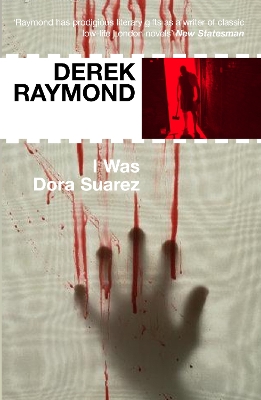Abacus Books
4 total works
“A unique crime writer whose fictional world was brutal, realistic and harrowing in the extreme.”—Guardian
In the three police procedurals that comprise the Factory Series, Derek Raymond has created a narrator who threatens to become a cult figure while preserving his anonymity. A loner and cynic, undervalued and underpaid, our hero is a nameless detective sergeant in the Department of Unexplained Deaths, a catch-all unit that investigates low-life crimes and is shunned by the blokes in the Serious Crimes Division of the Metropolitan Police.
But our narrator, working out of the Factory, named by the villains because it has a bad reputation for doing suspects over in the interrogation rooms, is fired by a real feeling for justice. He believes that an alcoholic, found obscenely battered to death in a seedy, down-and-out part of London, deserves as much official attention as, say, a dead politician. This “nobody” becomes a somebody—a kindred spirit who left behind a strange legacy. Our cop becomes obsessed by the case. But even he could not have imagined how vicious, evil, and perversely attractive his opponent will turn out to be.
In the three police procedurals that comprise the Factory Series, Derek Raymond has created a narrator who threatens to become a cult figure while preserving his anonymity. A loner and cynic, undervalued and underpaid, our hero is a nameless detective sergeant in the Department of Unexplained Deaths, a catch-all unit that investigates low-life crimes and is shunned by the blokes in the Serious Crimes Division of the Metropolitan Police.
But our narrator, working out of the Factory, named by the villains because it has a bad reputation for doing suspects over in the interrogation rooms, is fired by a real feeling for justice. He believes that an alcoholic, found obscenely battered to death in a seedy, down-and-out part of London, deserves as much official attention as, say, a dead politician. This “nobody” becomes a somebody—a kindred spirit who left behind a strange legacy. Our cop becomes obsessed by the case. But even he could not have imagined how vicious, evil, and perversely attractive his opponent will turn out to be.
This, the third novel in the Factory Series, sees Raymond's nameless detective leave London for a remote village called Thornhill, where he's meant to be looking into the disappearance of a local doctor's wife. How The Dead Live is a haunting, fantastical novel, with a hellish country house at its centre; a mystery with little interest in the mystery, a police procedural with almost no procedure. Instead, and as ever with Raymond, it's a brilliantly unsettling investigation into love and damnation. This is life seen from the very bottom of the bottle - a fitting succesor to classic noir writers such as Jim Thompson and David Goodis.
A man's corpse is discovered in a Rotherhithe warehouse, chopped up, boiled to avoid identification, and bundled into five Waitrose carrier bags. Our nameless narrator from A14 - the 'Unexplained Deaths' division of the Met - is put on the case. Operating, as usual, with his wit and sheer nerve in place of adequate resources and contacts, the narrator's investigations uncover much more than the murderer. As he probes a world of horror in South London, a terrible secret from his own past emerges. 'A bizarre mixture of Chandleresque elegance... and naked brutality' Daily Telegraph 'Hellishly bleak and moving' New Statesman 'Superb... an English Chandler... only better' Daily Mail
An axe-wielding psychopath carves young Dora Suarez into pieces and smashes the head of Suarez's friend, an elderly woman. On the same night, in the West End, a firearm blows the top off the head of Felix Roatta, part-owner of the seedy Parallel Club. The unnamed narrator, a sergeant in the Metropolitan Police's Unexplained Deaths division, develops a fixation on the young woman whose murder he investigates. And he discovers that Suarez's death is even more bizarre than suspected: the murderer ate bits of flesh from Suarez's corpse and ejaculated against her thigh. Autopsy results compound the puzzle: Suarez was dying of AIDS, but the pathologist can't tell how the virus was introduced. Then a photo, supplied by a former Parallel hostess, links Suarez to Roatta, and inquiries at the club reveal how vile and inhuman exploitation can become. I Was Dora Suarez is the fourth book in the Factory series

